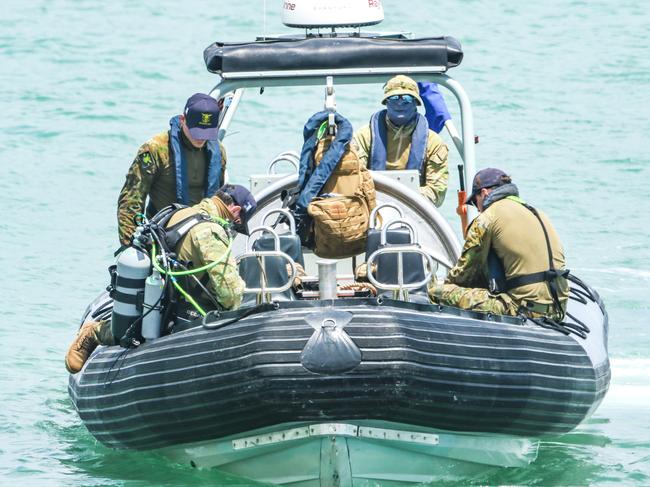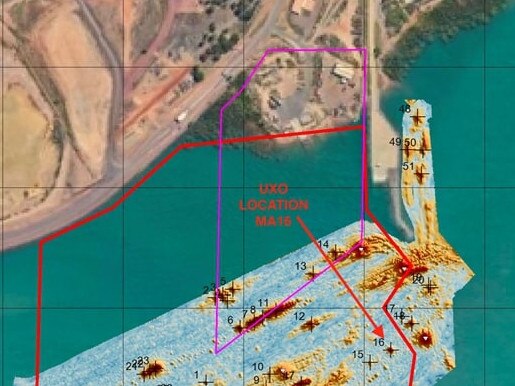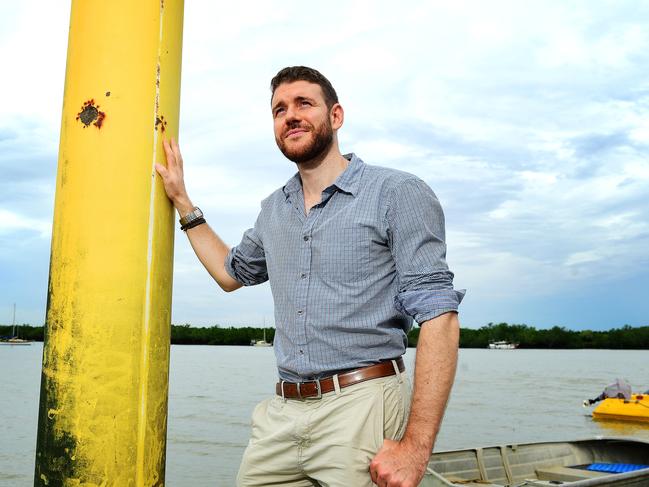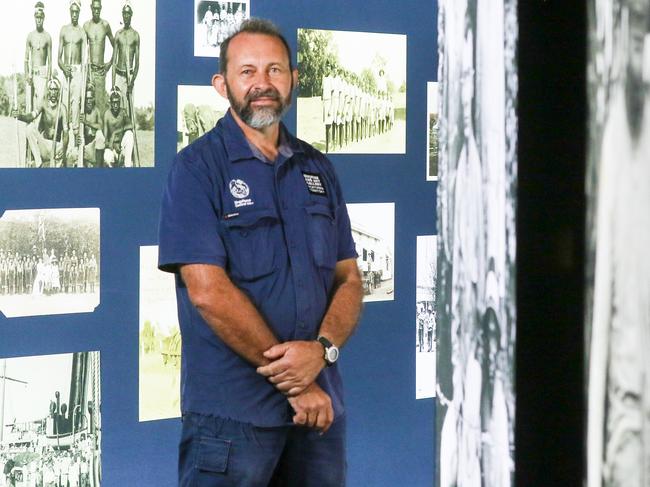Exclusion zone in place after divers locate unexploded bomb in Darwin Harbour
The Australian Defence Force continue searches to remove an unexploded bomb in Darwin Harbour as the exclusion zone remains in place.
Northern Territory
Don't miss out on the headlines from Northern Territory. Followed categories will be added to My News.
The Australian Defence Force will remove the bomb in Darwin Harbour but boaties could still be fined if they enter an exclusion zone.
The exclusion zone was rolled out after a dive crew discovered the unexploded bomb around the Darwin maritime maintenance hub project area on Monday afternoon.
The hub is also know as a ship lift and the divers are in the area ensuring it is safe for construction to start
The device is presumed to be a heritage item from WWII.
It is located in the water approximately 330m south of the multi-user barge ramp facility in position 12° 29’ 30” S. 130° 54’ 05” E.
As a result, an exclusion zone was announced by the Acting Regional Harbour Master.

The Northern Territory government has called in the Australian Defence Force to remove the bomb, with a team set to move in on Friday.
“The Northern Territory Government authorities have requested Defence assistance to render safe the suspected UXO,” a defence spokesman said.
“Royal Australian Navy has been tasked with providing an explosive ordnance disposal team to assess the object.
“Defence routinely assists state policing agencies in the safe recovery and/or disposal of suspected unexploded military ordnance found in the public domain.

Dive works in the vicinity will remain suspended until the matter is resolved.
Department of Infrastructure, Planning and Logistics executive director Shane Dahlhelm said boaties faced fines if they were located within the exclusion zone.
“An exclusion zone of 250m is in place until further notice,” Mr Dahlhelm said.
“We ask that all vessels and persons keep a safe distance from this area for their own safety.
“Anyone located within the exclusion zone may receive a fine.
“The department reported the potential find to the Australian Defence Force who are arranging appropriate planning, resources and management.
“Defence have precise safety procedures on how to manage potential UXO’s safely.”
For more details, go to the Notice to Mariners.
Amateur Fishing Association NT chief executive David Ciaravolo said there had been a fair amount of concern when the exclusion zone had been announced.

Mr Ciaravolo confirmed marker buoys and signs would be put in place to warn mariners, particularly around Darwin Port, of the exclusion zone.
The zone won’t impact launching at the East Arm boat ramp.
“It’s been a while since this has happened and people are obviously concerned about it because this is a place people would access,” he said.
“There’s always a possibility that if someone breaches a notice to mariners they could be fined.
“In our experience you want to stay out of the area not because of fines, but because it is a potentially dangerous situation.
“We strongly encourage people to look at the signs at both the Dinah Beach and East Arm boat ramps.
“Then it’s just a matter of looking for the yellow marker buoys.
“The public holiday is a day where we’ll see more fishing activity than the normal Thursday, it’s just a matter of then looking at the safety information.”
NT Museum and Art Gallery historian Jared Archibald theorised the object was either an allied mortar or a bomb.
“If it’s a bomb, it still could be an allied bomb or it could be a Japanese bomb or if it’s a mortar it’s definitely just allied. The Japanese did not use mortars here,” Mr Archibald said.
“After the war, huge amounts of allied ammunition was taken out in barges and just tossed over the side into the ocean, it’s everywhere.
“Mostly out of the harbor, not just in the harbour because they knew it was fairly shallow but someone may have accidentally dropped it overboard.
“If it’s any sort of bomb it should have dropped off the airplane and gone down inside the mud.”

Mr Archibald further stated the unexploded bomb could be completely safe, but even then caution was of importance.
“It may not even have a fuse so it could just be empty, it could be completely safe but that’s not the point,” he said.
“With anything that may be explosive, even if it’s been in the ocean for 100 or 80 years, you have to treat them like they’ll kill you until they know it won’t kill you.
“In the first raid on Darwin, 800kg bombs were used, as well as 250kg bombs. 800kg bombs are massive and create huge craters and havoc. You would feel one go off in the distance.
“There’s ways you can blow bombs up so it doesn’t have the same explosive power because you’re actually splitting them in half.”
More Coverage
Originally published as Exclusion zone in place after divers locate unexploded bomb in Darwin Harbour




